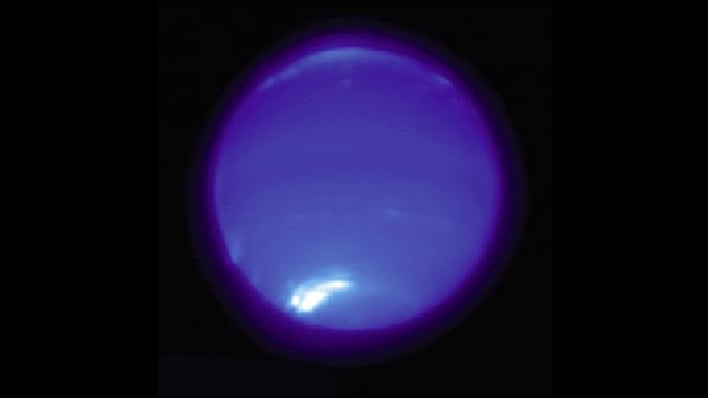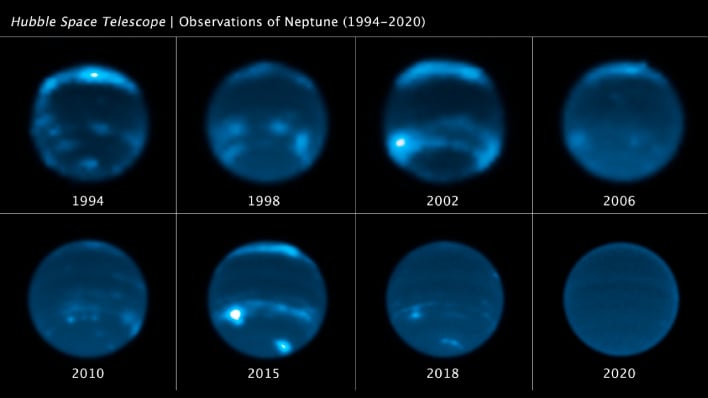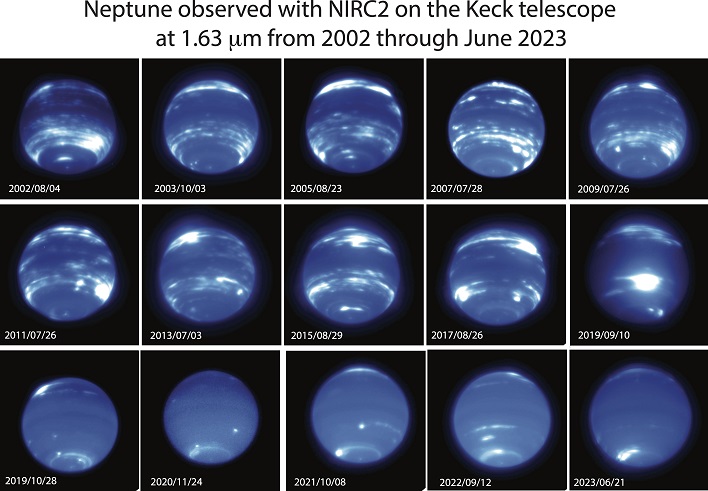Neptune's Clouds Unexpectedly Vanished And Our Sun Looks Guilty As Hell

Neptune was observed by the Voyager mission from 1994 until October 2019. During that time the planet was always viewed as having numerous cloud features. That all changed, however, as the clouds were surprisingly absent in observations made in 2019. It wasn't until mid-2023 that clouds returned in the northern hemisphere and started reappearing in the mid-southern latitudes.
"I was surprised by how quickly clouds disappeared on Neptune," remarked Imke de Pater, emeritus professor of astronomy at UC Berkley and senior author of the new study. "We essentially saw cloud activity drop within a few months."

Chavez and her team monitored the evolution of Neptune's appearance utilizing images taken by the Keck Observatory from 1994 until 2022. They also used observations made by the Lick Observatory (2018-2019) and the Hubble Space Telescope (since 1994). The data provided an interesting pattern between Neptune's cloud cover, and the solar cycle, according to a press release by the Keck Observatory.

"It's fascinating to be able to use telescopes on Earth to study the climate of a world more than 2.5 billion miles away from us," exclaimed Carlos Alvarez, staff astronomer at Keck Observatory and co-author of the study. "Advances in technology, as well as our Twilight Observing Program, have enabled us to constrain Neptune's atmospheric models, which are key to understanding the correlation between the ice giant's climate and the solar cycle."
The research team continues to monitor Neptune's cloud activity and will be studying recent images taken of the planet by the James Webb Space Telescope. By using JWST, the team aims to further investigate the physics and chemistry that leads to Neptune's dynamic appearance.

